Introduction
Hello reader,
In this series of blog posts, I am going to share with you some lessons I stole from reading “high output management” written by Andrew Glove. Instead of just regurgitating what Andrew said chapter by chapter, I reckon I could do a more fruitful job by presenting in a way that is consistent with my own understanding.
Andrew is a big picture guy. After all, he was the CEO of Intel for many years. The big picture problem a company face in a competitive market is to bridge the gap between those who have the power to make managerial decisions and those who have the knowledge to do so.
The US market is run by private enterprises that emphasize on competitiveness. The reason is that high output management is not targeted to those institutions that are judged more by procedures or correctness than results or those have monopoly. Thus, all the following discussion only concerns firms that compete to supply the most suitable products to meet market demands.
Market change is constant. However, we have two distinctive types of change. One is incremental and slow. The other disruptive and rapid. The latter has been discussed in Andrew’s book, “only the paranoid survive: how to exploit crisis points”. He talks about his experience as the decision makers during a memory chip business crisis in the 70-80s. The former is the main focus of “high output management”.
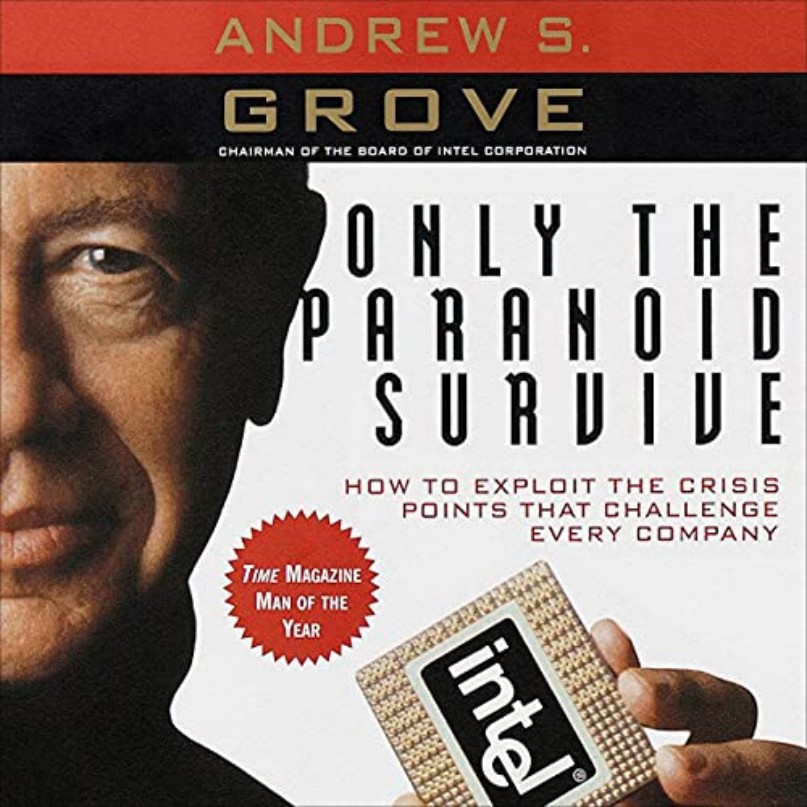
The demand of the market as described in this book is computer chips, that was the main business of Intel at that time. However, the management lessons are just applicable to other products outside of the chip industry.
Fundamentally, Intel was a tech and manufacturing company. To analyze the output of Intel, we examine four pillars, and they are:
- The output of capital goods or equipment,
- The output of employees,
- The output of teams,
- The output of corporation.
I shall walk you through each and every pillar in the subsequent sections.
Author’s background
Taken from https://www.britannica.com/biography/Andrew-S-Grove on Dec 6 , 2023
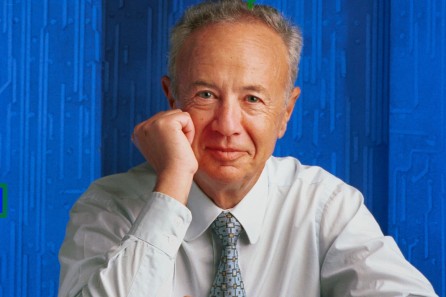
Andrew S. Grove, born in 1936 and died in 2016, was often credited as one of the key leader in the management team of Intel during the time when memory storage device business got destroyed by Japanese competitors and launched Intel into the burgeoning microprocessor business. The period during which Intel shifted out of the memory business and embraced the microprocessor business had been written by Andrew in his “only the paranoid survive: how to exploit crisis points”.
His career and the rise of Intel are linked. He entered Intel when it was small. He moved all the way up to management ladder. When he left, Intel was massive.
The high output of capital goods or equipment
Borrowing the breakfast factory example used in this book. I think the equipment are the most obvious and perhaps the easiest part to manage out of employees, teams and corporation. If we run a breakfast factory, we need some capital investment or cooking apparatus to help us prepare an English breakfast. What a customer wants is cheaper, faster, tastier.
An English breakfast constitutes 3 separately prepared items: a fully boiled egg, a piece of toast, a cup of coffee. An egg boiler boils an egg. A toaster prepares the toast. A coffee brewer brews coffee.
Since boiled eggs, toasts and a cup of coffee can be prepared separately, we have them prepared in parallel to reduce our customer wait time and to improve turnover.
As shown in the workflow diagram below.

Like a running race of 4x400m, the speed of the team is determined by its slowest member. When we make an English breakfast, our speed is limited by our slowest step. In this example, our slowest step is waiting for a toaster.
If we could shorten the wait for the toaster , we reduce choke point and cut down the wait time. Thus, we now know that the output of capital goods depend on its choke point. If we can reduce them, then our output rises.
To continue with out toaster problem, Here are a few options,
We can buy a toaster with more slots, so that we can prepare more toasts in one setting. We can buy more toaster that operates side by side.
Afterward, we can see that out next choke point which is the time we need to boil an egg.
To shorten the time of boiling an egg, we can try To boil more eggs in one go (batch operation), Or we can buy a boiler that have got a conveyor belt structure which allows us to continuously collect boiled egg at the end outlet or with a shorter time interval (continuous operation).
By reducing the time spent at each step, the process becomes more efficient and faster.
.jpg)
Of course, the cost of apparatus and the demands on English breakfasts have to be considered.
Revenue and sales volume determine how much we produce. More precisely, it is the forecast of these two factors. Andy talks about this more in later section.
Proposition:
Inputs that are processed correctly with the right apparatus over time produce outputs.
The management of capital goods is about the input, process, apparatus and ultimately output.
Oftentimes, it is better to foresee potential problems and prevent them from happening in the first place. It is easy to understate the extent or the chances of a problem; treating that problem when it arises can incur a hefty bill and delays .
In this book, he said what if our supply is cut off, we need to have some inventory or stock that is enough for 1 business day. Thus, we must balance the cost of storage and space required and the impact of such practice might have on food quality etc. Otherwise, we have no English breakfast to sell after the inventory of raw ingredients is depleted. During the supply chain disruption over the COVID pandemic, we witnessed supply-side inflation and shortages.
If we can catch a problem, it is better to catch it early on in the process rather later. Its remedy is going to be more expansive as the situation deteriorates which it often does when it is left on its own device.
So to catch problem early, we need to monitor and detect signs of problems. The monitoring and detection are the key. We are told to monitor all aspects of the production from input or raw materials, the cooking or preparation process and of course the final product after assembly, the complete English breakfast on the tray.
The quality of the final product is very important, and as the business grows, we ought to put its quality high up on our priority list. The rationale is that we cannot figure out what every customer may do with the final product. (No, the breakfast example makes little sense here. But microprocessor can perform a wide range of computing tasks depending on computer software, so the rationale makes sense. Andrew mentioned about the recall of Intel microprocessor chips as they produced a floating point error during complex calculations)
One more thing that is very crucial to the output of the capital is the training of an operator. The operator must learn to use the equipment properly. In his experience, one worker who normally needs 200 hours to learn how to operate a wafer fabrication machine.
However, in the case without sufficient training, a worker did not notice a warning signal from the equipment until so much time had passed and so much material had gone through the wafer machine. These semi-processed silicon wafers were of no use as they were faulty and unsuitable for further processing. With that, Intel lost 1 million worth of raw silicon wafer and the time needed to redo that batch.
To monitor properly, we paradoxically need more equipment like senors , detectors, indicators, and meters, etc. Inside our breakfast factory, we use thermometer to record and measure temperature of water in the boiler continuously. We size up the eggs, we detect all kinds of problems, the type of eggs, the quality of bread, the process and the kitchen hygiene. Applying automation and streamlining steps wherever possible.
With the explosion of AI and robotics, it is not hard to image that machines are getting “smarter”. And the internet of things are giving smarter machines more sensing capabilities. More capability, more steps can be automated. More sensor , more awareness, more able to detect more problems. More problems detected and caught early leads to cheaper production by prevention, better product quality, and shorter downtime. Perhaps, this may be the driving force behind the statement: technology is deflationary.
The high output of employees
The way we achieve high output on capital goods is different to the way we achieve high output on people. We now consider the next pillar: the high output of employees or human capital. Here I must stress that we are looking at an individual employee. Later we will examine the team of individuals.
We first begin the comprehension of an employee by understanding the life cycle of an employee at a company. We begin the cycle by first acknowledging there is a need to hire someone in the labor market and there is a budget for the role. A job ad is written and posted on the internet. We got some potential candidates whose CVs are reviewed and screened.
We schedule for an interview with most relevant candidates and conduct a background check. If we discover some interesting and new information about the candidates, we may consider a second interview to talk with the person further.
Next, if the candidate pass all the stages, an offer is sent. For those who accept the offer, we use a probation period to see whether our new employee fits with the Intel culture. More on culture later.
I reckon Andy thinks the corporate culture underpins many things that happen at Intel. I personally believe that as a CEO of Intel, he considers his job to nurture, foster and maintain this cooperate culture.
In this book, he not only shares with us his story of a successful hire, but also an unsuccessful one. It is common sense that relevant background and training must be met for a job. For instance, engineering background is required for an engineering role – the know-hows and problem solving. Yet, Andy shared with us in this book a story of someone without the background training in the domain, but he got the right mindset and thinking. He was hired.
He explains that he gives a test to someone with the right educational background but with little or no experience in the industry Intel is in. He converses with that person. Since he knows the candidate has no experiences, he allows the candidate to probe him by asking questions regarding the context. With common sense, logical deduction, and guesswork, the candidate comes up with a step by step solution that makes sense and is close enough to the answer Andy had in mind.
However, he mentioned that despite using the same recipe for hiring, he had hired someone who is good at being interviewed but bad at getting the job done.
Thus, at this stage, the manager needs to evaluate the employees’ performance and decide to
- Promote if the employee performs well,
- Demote if the employee performs poorly, or
- Lay he or she off if the employee after proper training and feedback remains unsuitable for the job and his or her performance is below expectation.
On the other hand, when anyone decides to leave and announce their decision to the manager, depending on the view the manager has on them, he can make one of the two moves. If that employee is good at his or her job, it is important that the manager tries to keep that person within the company. To do so, the manager must learn to converse with the employee to understand the motivation behind his or her leaving. His tip is to ask why he is about to leave (the motivation). The first time you ask that question, the reply is always mechanical, standard and well rehearsed with preparation. Then, you try to ask and probe further, he or she may reveal the true intention and belief.
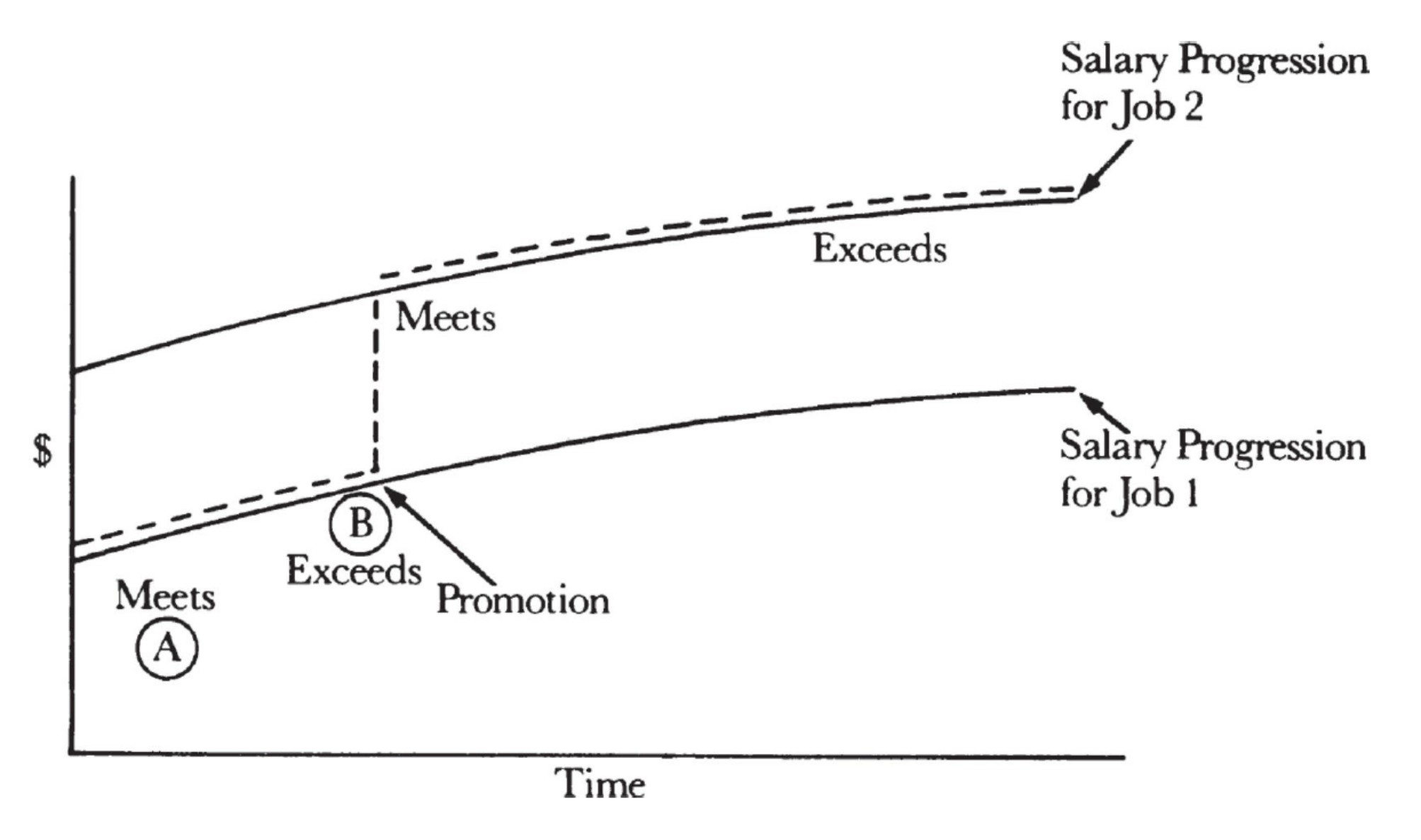
One of the most important aspect of a manager’s responsibility is to develop the subordinates during their time at Intel. Like the case with capital goods, the machine is not going to be productive if the operators misuse it or fail to operate it as intended.
Andy summarizes what drives good work performance into two factors. They are the ability and the willingness to get the job done. Skills are improved with proper tutorials and training. Therefore, he proposes a concept called task-relevant maturity. Task relevant maturity is to make sure managers do not confuse someone with potential with someone who can do the job well already. In particular, not to let age, experience of prior jobs, friendship, and educational background confuse with the actual task at hand.
While these attributes may be indicative of future performance, they may not be so now. Why task relevant? If someone is a good salesperson and has received a promotion to team lead based on his or her past sales records, he or she has a low task-relevant maturity as a manager but high task-relevant maturity as a salesperson. His or her management task-relevant maturity rises while he or she receives more training over time. It is important that at the beginning when task-relevant maturity is not high, more monitoring and support by senior staff are warranted. Once he or she becomes capable at doing the job in the new roles, they can do the job independently with less supervision.
Following this principle, it is obvious that a manager tends to delegate his or her most familiar tasks and teaches his or her most familiar skills. Andy mentions that here one-on-one meeting can be helpful. Since every individual communication style is idiosyncratic, we need to explore and discover our own style and method.
Andy management emphasizes planning, an indispensable element of work. It is a bit similar to the old adage: you reap what you sow. The idea is that factory makes to forecast, not to order. The just-in-time management is getting so popular nowadays that it is not hard to comprehend. I use the algebra analogy to visualize this. If A is our forecast, B is the actual (delayed measurement). What we actually should have done is A+B. It would be great but unrealistic for have a perfect forecast, B = 0. thus, we keep adjusting, monitoring and updating the forecast, production, and schedules.
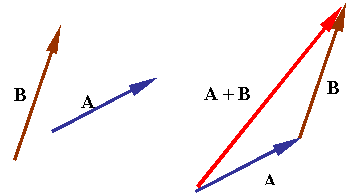
Employee performance appraisal is the key part of a manager’s responsibility. The principle behind appraisal is to use constructive feedback to improve the employee’s performance and productivity. Thus, Andy encourages all managers to provide feedback that are doable, concrete, and helpful while maintaining a perspective that we focus on tasks and not on people. I am amazed that Andy spends his precious time to edit other manager’s performance appraisal report just to ensure the quality of these reports reflect his principles and objectives.
Perhaps, this is more relevant to high tech firms, knowledge based jobs are more difficult to ascertain the true contribution of an employee towards a final output. One reason is that from the time he or she performs a task to the time all the relevant outcomes pertaining to the decision and behaviors show up, the time gap can be years apart, yet performance review occurs annually. It is often that the manager can only observe some but not all contributions and harms. Using a analogy to explain this concept. The light can see from distant stars are not the light they are emitting right now. The light comes from very very far away so what we see are what thy look like many many years ago. The time lag is astronomical. Performance evaluation is very real as it tights to bonuses paid to the employees. Andy formula for performance bonus is 1/3 individual performance, 1/3 team performance, 1/3 company performance. Good performance deserves promotion.
In addition to ability as a factor for good work performance, the latter part is about motivation. He talks about the Maslow’s hierarchy of needs. As we stand today, and of the writing of this book, 1995, it is fair to say that most have achieved the basic shelter and safety needs, especially those who worked for Intel. So to motivate them, we need to look to higher levels such as a sense of achievement, self actualization, etc.
.jpg)
Speaking of motivating employees, I have also come across some other articles that discuss incentives and compensation of senior executives (management needs to be motivated just as well).
What is interesting is that to motivate senior staff, people pay them far far more than average workers. While it is understandable that their work requires more skills and are harder and take on more responsibility, the gap is growing since 1970 and widens exponentially since 1990 and fluctuates at around 300 times during 2000s.
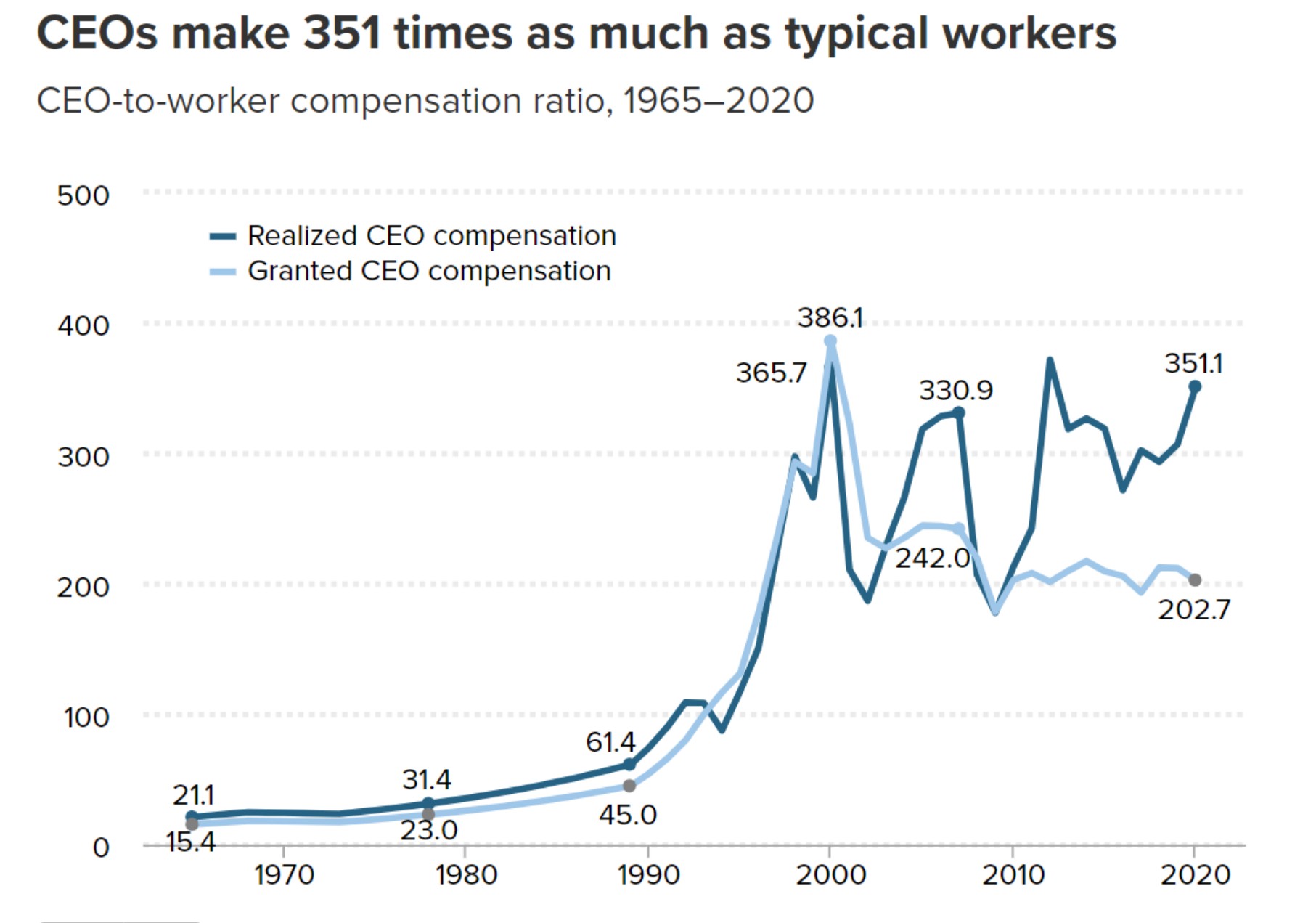
To put this in perspective, it shocks me to know that a CEO only needs to work half a year to make more money than an average worker will ever make in a lifetime.
Performance review and delivering the “news”. During a performance review, the manager delivers his or her opinions and judgement on the work that his or her subordinates have done over that period. In Andy’s experience, he has dealt with both types of employees. Let’s start with the worse.
It is normal to react emotionally to bad news. There are 3 stages of an emotional reaction. The reaction starts from ignoring the news, denying the bad performance, and blaming others for the results. It is hard to resolve the emotion entangled in each of the three stages. A tip would be to send the report to the subordinates prior to the meeting, leaving ample of time for him or her to read and think through the issues properly at his or her own pace.
However, if the manager and the subordinates can both get over with the aforementioned THREE emotional reactions, they can then take responsibility and find a solution. Taking responsibility and finding a solution is less emotional and more engineering. ** The goal is to turn the performance and behaviors around. ** Persistently poor performance eventually is met with layoffs.
Self-review can also be useful. It demonstrates one’s ability to reflect and also it shows another set of skills - think critically about the work done.
Good performers deserve a proper and throughout review, even more so than poor performers (more on this later!). A manager must always give constructive feedback to these subordinates who have done a job exceptionally well, so that they can keep improving. In turn they become ready for a promotion when the time and opportunities arrive.
However, in such circumstances, a manager may unconsciously choose to spend more of his or her time and effort in helping the under-performers, instead of the Ace performers. This bias is considered inappropriate in Intel culture and management practice.
At the end of the day, the main thing is to what gets performance improved. ** It does not matter as long as we focus on the task-relevant feedback and give helpful advice.**
Why do we form a team?
Market perspective
The customers’ demand are highly complex and are evolving all the time. It is very tricky to navigate this landscape. On top of the demand, suppliers can also exert an influence on a business that faces competition from competitors. So we need a team of talented people to make a business work.
Efficiency perspective
Andy reckons that the output of management is the output of the manager and the leverage of the team, or department. Without a loss of generality, what he is referring to is people under this purview or commands or influences. So, a team is a way to amplify the manager outputs, a form of leverage.
Pragmatic perspective
The tasks of meeting customers’ demands often involve many disciplines of knowledge and skills, so it is not practical to expect a single individual can do all of them. Thus a team with a set of diverse skills and knowledge is a must.
How to mange a team? Andy gives some of his own experiences at Intel and ways to guide the reader. The first tip is to pay attention to leverage. Because of the manager output formula, we notice that if the leverage is not applied correct, the output can be worse. For examples, the leverage can be positive or negative. We strive to achieve a positive leverage that is greater than 1.
Figuratively speaking, Andy draws this. 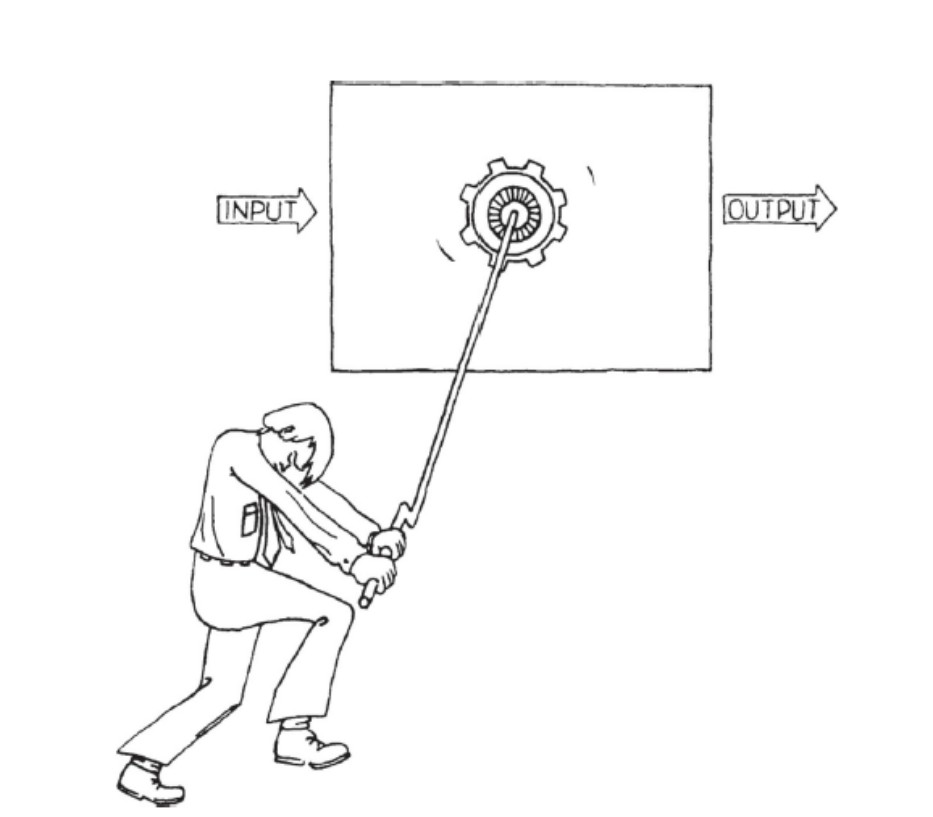
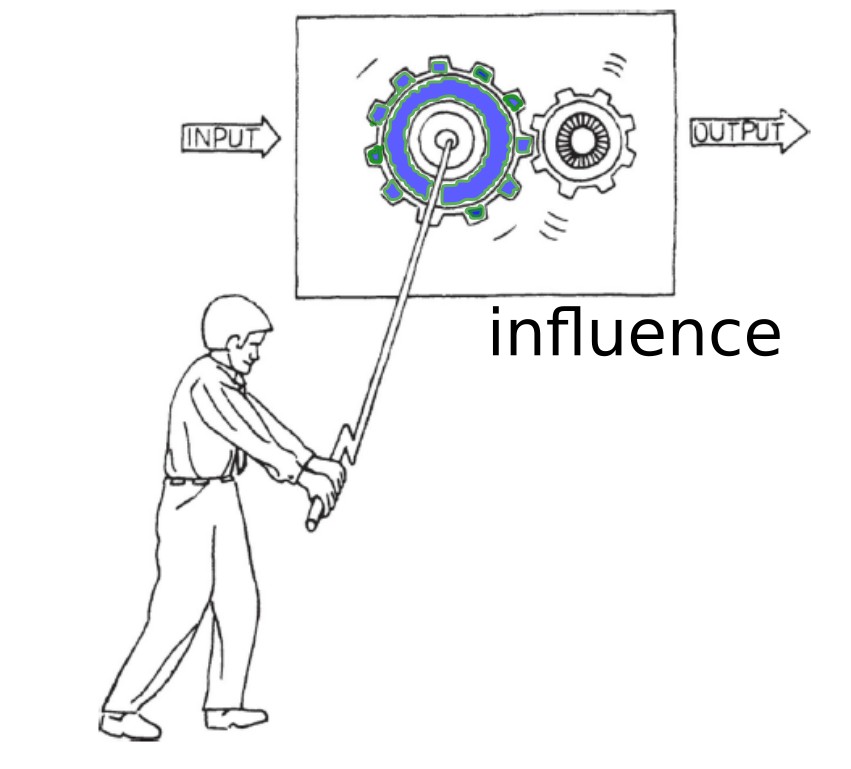
In particular, he suggests that we have 3 ways to improve the output of a manager and the team. We can 1) use a more effective approach 2) spend less time 3) do more meaningful activities
I just cannot help but to applaud. I personally have met friends who would be willing to try something even though it is destined or extremely unlikely to succeed. I have to shamefully admit I have done the same. Nothing is more time wasting than to spend time and resources on a project that is going to be doomed.
This is especially the case when someone fails to evaluation the prospect of the project objectively. They let their emotions decide for them. Sadly, unless your emotion is highly tuned to reflect the objective reality. The motion-led decision making often leads to less than ideal output.
Funny enough, ** someone once says that the problem of the world is that good behaviors feel bad and bad behaviors feel good. **
Thus, I think what Andy tries to teach us and what many wise sayings as well is that we need to have the right incentives that fully align with the behaviors we want to encourage. So that good behaviors feel good and bad behaviors feel bad.
From fundamental psychology courses, we also need to make sure the feedback is immediate, not delayed. Otherwise people find it hard to learn the right lessons.
Ways to manage a team
Meetings or team meetings are a part of manger work and responsibilities. Andy thinks that meetings are meaningful and useful if done properly. He spends a good part of his daily time at various types of meetings as described in this book.
A meeting is useful on two fronts. A meeting is an effective way to have a one-on-one communication. A one-on-one communication is very helpful when the manager needs to teach a subordinates about the job and pass along the relevant information. It is very intriguing that Andy advises a manager to pass on the most familiar job to his or her subordinates, who can then be evaluated more properly and accurately. The most familiar job a manager does know about is also less ambiguous. That is a key to delegation, I think. Thus the manager can focus on more uncertain and complicated tasks.
Moreover, a team needs to have a team meeting, which is different from a one-on-one. It has more participants attending. Concretely, Andy suggests that there are a few big categories of team meetings, namely routine regular team meetings and focused meeting. Regardless of the categories, time costs money, so managers must ensure that only those who need to attend the meeting, and only those who can contribute to the meeting are enlisted.
What do we mean by their contribution? Their contribution refers to the added value they provide in the decision making process. Routine regular team meetings are useful for review and planning progress. They are very useful for monitoring and prevent problems if we see warning signs. Since it is regular and the agenda is pretty much well known in advanced, everyone prepares well for this kind.
A focused meeting is about a particular incident, and those who initiate the meeting would like to have a decision made by the end. Since we cannot know when the incident arises, otherwise we could have prevented it from happening if we have not run out of luck. Thus, a focused meeting is a bit more ad hoc, so it is trickier.
We need to ensure several aspects are preform appropriately to ensure its efficiency. 1) We need to decide who the attendees should be. Once assigned, they are required to attend the meeting because this is part of their jobs. 2) What we need to discuss and explain , especially regarding with the problem at hand.
During the meeting, when each employee presents his or her knowledge, views and opinions about the problem, we need to figure out what information has got given and what else may be needed. By the end of the meeting, we need to have a doable plan, with deadlines and responsibility and accountability.
Nothing would work if the meeting atmosphere is toxic. Andy cannot emphasize enough that we need to cultivate a culture that we dare speak our mind, and that we dare listen to opposing opinions. However, Andy and many others have noticed confirmation bias. The bias comes from the fact that human nature has a propensity to listen to what he or she likes or knows. And we like to let others speak first by withholding our own opinions.
I think it sounds like risk management, too risky to be the first to speak, for whatever you say may anger other members of the group. So those who speak later can have time and observe where the general opinion is heading and just to say something along those lines. With that said on the behavior of members of the team, it is not hard to imagine that we must urge a team member to express correctly, listen properly, and tolerate (or even celebrate) diverse opinions from other members.
A successful meeting often leads to making better decisions. More on this later.
Andy thinks the size of the team should be fewer than the slices of a pizza, 8.

The general rule of thumb is that a manager spends typically few hours per week with each team member. So we can only have around 6-8 members. Too many would mean the manager has no time for his own work.
Today, we have technology that is far more advanced than 1995 (the year this book was first written). With better technology, we can communicate information and share documents, videos, etc. more easily, so we are able to use meetings for other functions such as explaining methods, opinions and experiences, and discussions.
The overall process can be very inefficient. This book is about high output management. What an oxymoron. Andy understands this objection. But he thinks that if everyone can make up his or her own decision. There is no cohesion and group decision, and perhaps, worse decisions would be made as a result. After all, original sin of management is the discrepancy between those with the power to decide and those with the knowledge to do so.
To assist us in group decision making, he has a step-by-step guide.
1) We ask what needs to be decided upon right now at this meeting? Oftentimes some decisions had already been made at other meetings that we don't want to regurgitate or ruminate on them.
2) Andy gives an example. Should we build a new factory building at a nearby Intel existing site in the Philippines or should we build another new factory farther away?
3) When do we need to make this decision? Because building a factory takes time and Intel needs a new factory for production. Working the math backward, we need to have the final decision made within 1-2 months.
4) Who should make the decision? The mangers in the Philippines.
5) Before making the decision, who should we consult? The team that work at the nearby factory and the team that work on the farther site.
6) Who should have the power to ratify or veto the decision? Andy / CEO
7) Who should be notified of the decision? Chairman and the rest of the teams
Whenever there is a sudden and unexpected change in the direction of work from top management, it is important to announce this shocking news and let everyone else have some time to absorb it.
Team structure is another aspect of the team. Our concerns include how to put the teams together with other teams. This problem arises when we try to scale up the business.
Going back to the breakfast factory example at the beginning of the book, the business has become such as success that it is ready to scale nationwide. The problem we face is
- How to structure the teams located all around the country?
- How to handle the logistics, supply, employment, etc?
- What dishes to be standardized our menu?
- How to standardize raw material supply and operating hours? Or should we avoid standardization?
- How to ensure quality across so many outlets?
While there is of course no “correct” answer to the above questions, Andy uses a two-layer management framework that is depicted in the organizational chart to address them.
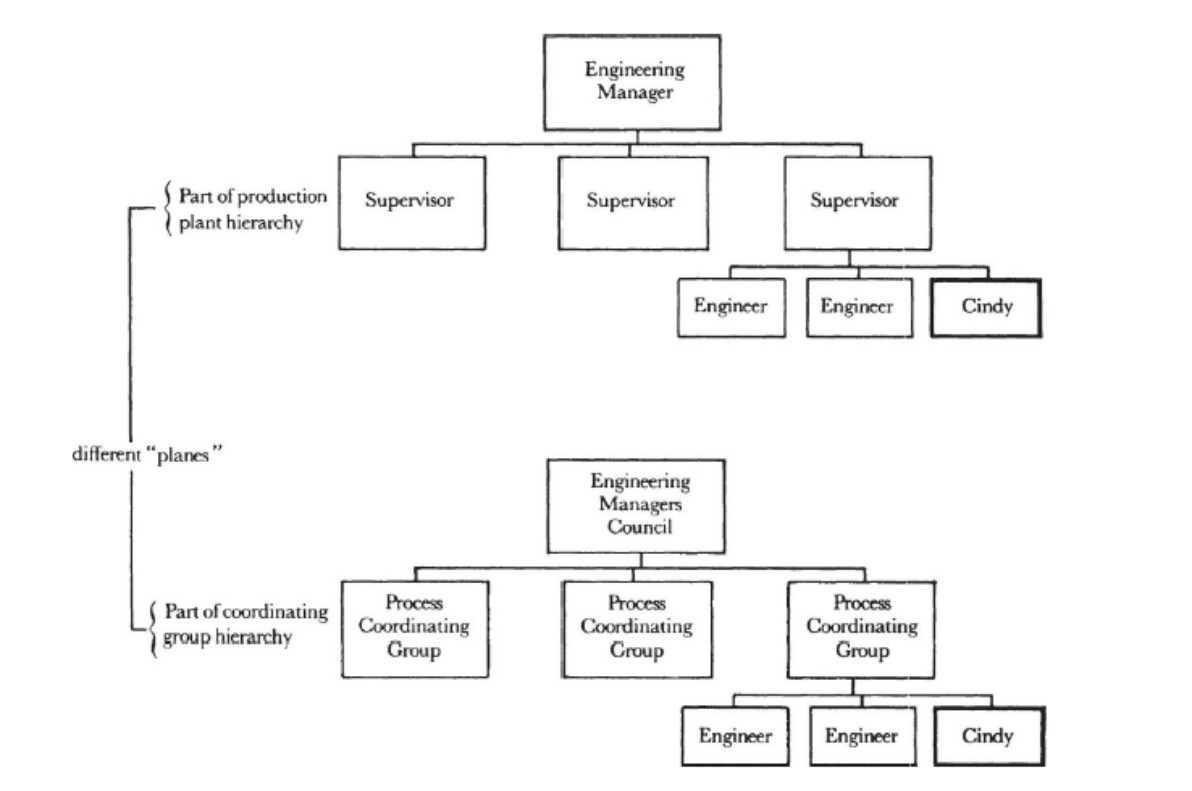
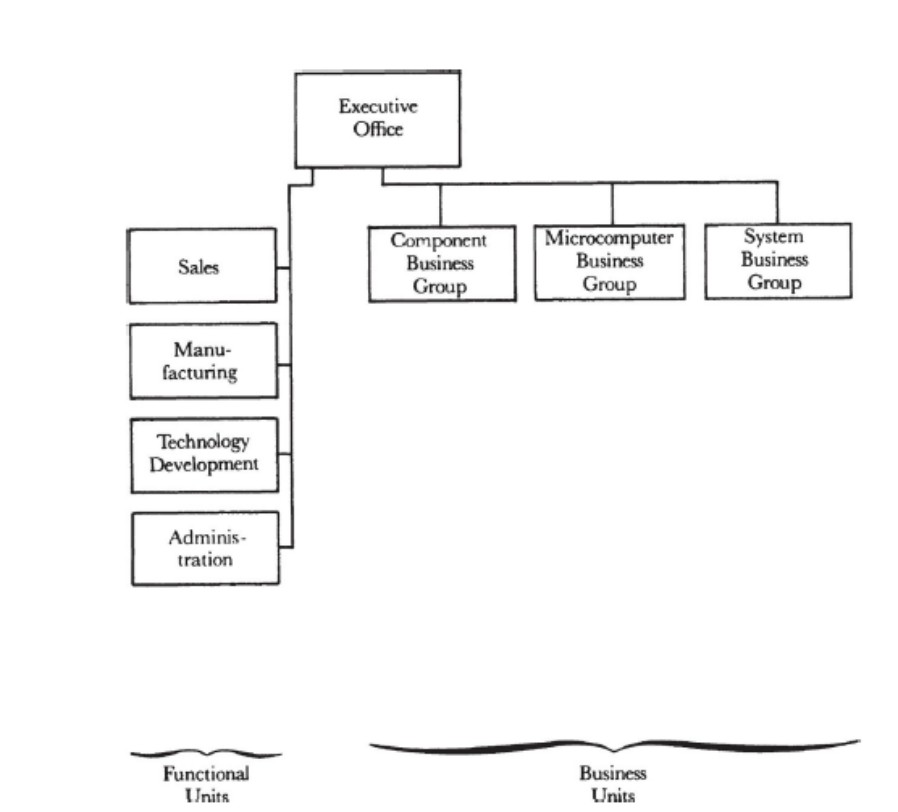
The figure shows two separate branches. The employee, Cindy, shows up once on each branch. The top branch indicates the production branch hierarchy. The bottom branch indicates the coordinating group hierarchy. The production branch supervisor monitors and supports Cindy’s work; the process coordinating group needs the output of Cindy’s work. The two branches run in parallel. Also, notice that a supervisor cannot have too many subordinates underneath. Remember the pizza rule: a maximum of 6-8 subordinates.
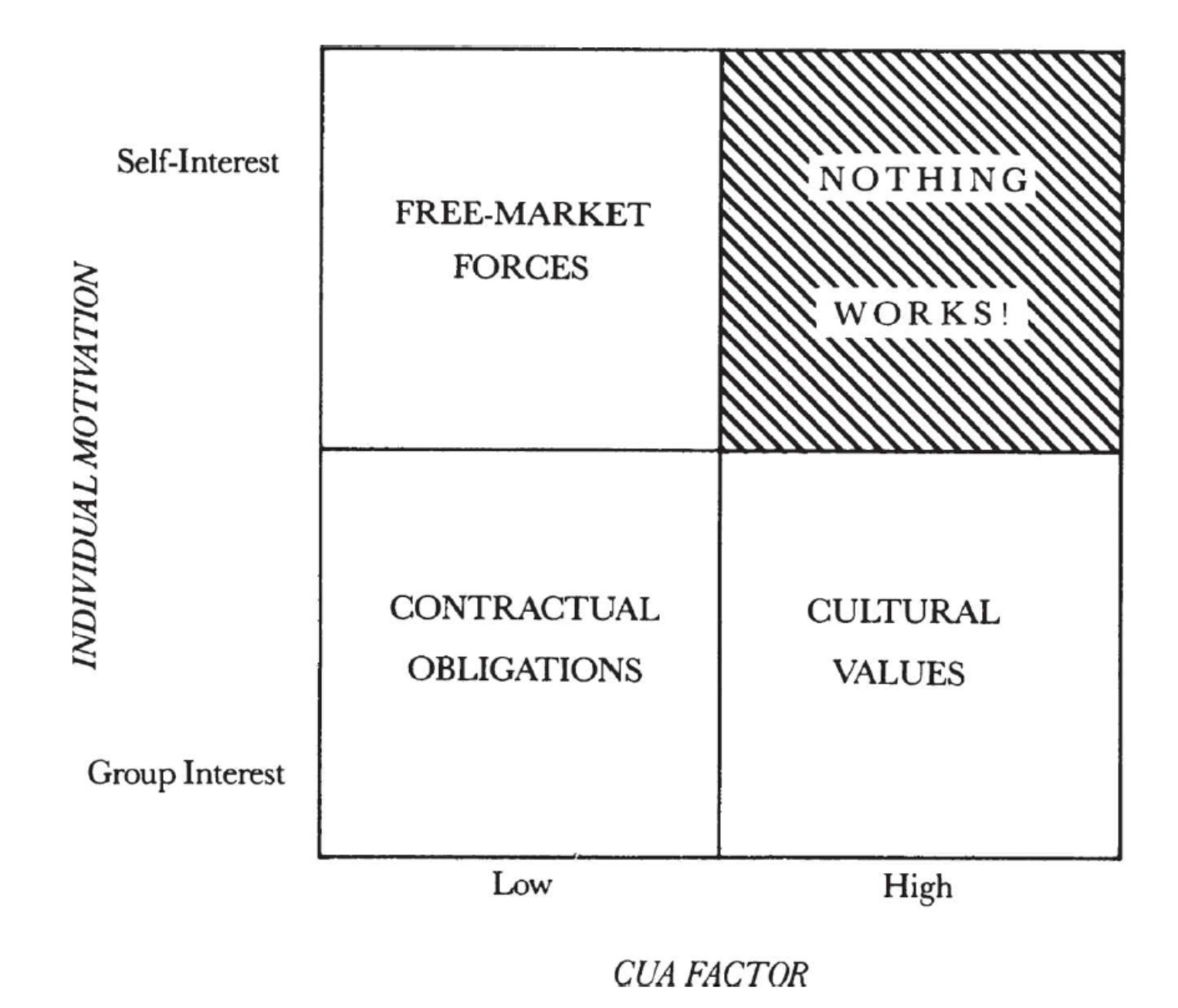
The working environment influences human behaviors, and it is considered a continuum of CUA factor. The CUA factor is an abbreviation for the scale of complexity, uncertainty and ambiguity. For instance, if we cannot say exactly how long a project is going to take, this increases uncertainty. If we cannot say exactly what we need to do to complete it, this task is highly ambiguous. If we cannot say exactly how many parts are there, it is highly complex.
The human behaviors are driven by self-interest all the way to group interest. The figure below simplifies the interaction of those two scales into 4 quadrants. The free market forces are best served with low CUA and by highly self-interested individuals. The contractual obligations come about as we motivate individual to pursuit self-interest to group interest. If the CUA is high and our motivation is largely driven by self-interest, management has a hard time managing. Fostering cooperate culture is the key to maintain optimality (from a manager perspective) in a high CUA environment.
Concretely, we can explore some real life examples. In a fair and transparent spot competition, the rules are clear, route is known, and the objective is set. Its CUA factor is low. Each player or each team is driven by their interest. The rule is the fastest gets the trophy. From management perspective, the outcome is many teams or players got filtered out based on one particular metric. Thus, the output is a selection of the best of the best.
Sometimes, even in a low CUA environment, motivation by self-interest can be sub-optimal compared with motivation by group interest.
Let me digress a bit to explain why sub-optimality can arise. In game theory, economists illustrate a situation, commonly known as the prisoner’s dilemma, which involves the prisoners who have high self-interest and low trust in a low CUA environment.
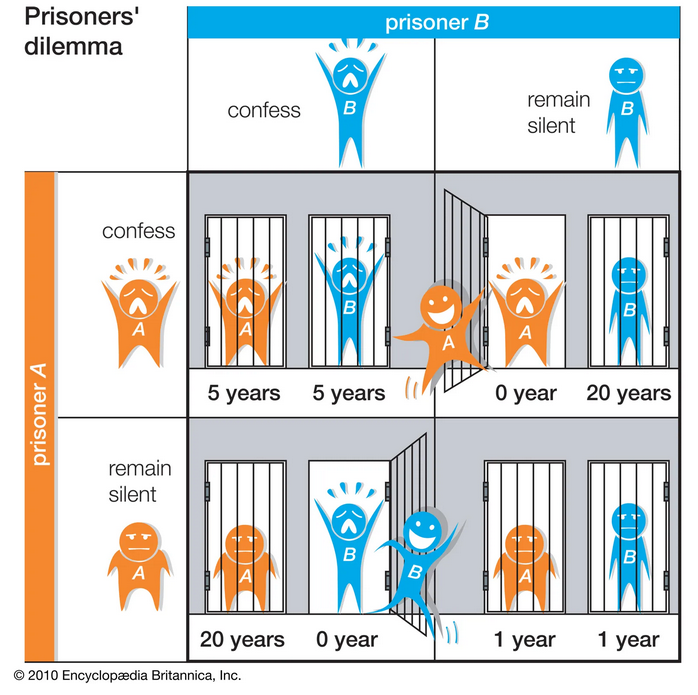
The payout for 4 different scenarios are illustrated in the figure. What is really interesting is that, the rules are very clear and the penalty (years in jail) are well listed in advance. For each prisoner, he can only decide either to confess or to remain silent. However, from his perspective, the payout of remaining silent is low, serving a total of 21 years, whereas the payout of confession is high, serving just 5 years. Therefore, both prisoners would confess. However, an outside observer knows that the most optimal actions to take is for both to remain silent. This way, the payout is the highest with each serving only 1 year. The concluding remark is that we , managers, need to introduce extra measures to guide the behavior to optimality.
One method is to form a contractual agreement. Another is culture and social expectation. In addition, rules are unsuitable in the high CUA environment. The rules are fixed, lacking any flexibility in the dynamic environment. Their enforcement can be tricky. However, culture is more adaptive, constantly evolving. Its flexibility is more useful in a dynamic environment.
Management usually pays employees more if the nature of the job contains higher CUA level. So if we want to keep wage cost low, we better split, design, and reorganize tasks, so that they are as low in CUA as possible.
It is extraordinarily hard to hiring an outside CEO to manage a company that is in a crisis and to steer the ship away from the next trouble. An outside CEO, even though he or she may be very talented in managing companies, he or she may not able to execute a rescue plan that eradicates the problem at the root. If the cooperate culture was part of the problem, then not knowing the culture is not part of the solution.
The high output of corporation
Intel is a chip manufacturer. It sells, produces, and develops microprocessors. Its product ranges are not narrow. Here, Andy argues that the firm is structured in two separate yet interconnected blocks.
We see that figure below.
The vertical column represents functional units. The horizontal row represents the business units.
The functional units are shared among all business units. This way, Intel can standardize the procedures of sales, manufacturing, technology development and administration. It also enjoys the economy of scale; it houses 70% of all Intel employees.
However the business units serve to adapt to market preferences. For instance, the menu of the breakfast factory varies depending the local tastes and raw material availability. The system business group, microprocessor business group may compliment each other. For instance, say a laptop requires both the WiFi card, microprocessor and many other components that Intel manufactures. Then, each group does not advertise separately. Instead, they sell all components as a bundle.
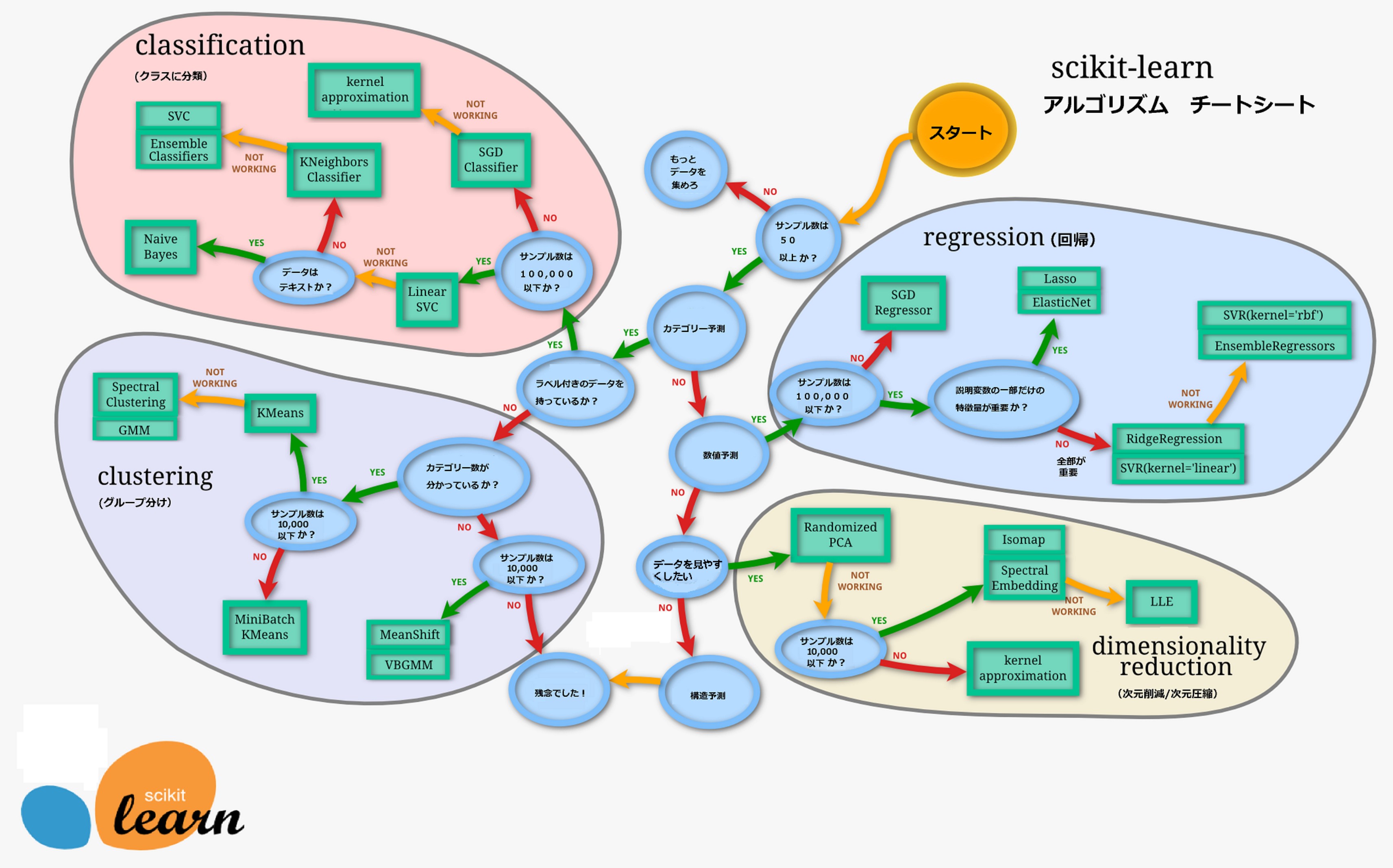
I have seen similar structure in my work as a programmer. Scikit learn, a python package for machine learning, categorizes its APIs by algorithm types; PyTorch, a python package for training deep neural networks, lists out its tutorial by applications.
From sales to delivery, we have learned that we need to pay attention to choke points. Here we revisit the concept from a corporation perspective. In this diagram, we can see the construction branch at the top and a sales branch at the bottom. The choke point is that the manufacturing plants want the order to come in before making the product and then send the product to its customer. To minimize this coke point, it would be great to predict the future demand and start making the products prior to the arrival of the actual sales. This way, the choke point of the lag time in manufacturing is reduced. And if so, the next choke point becomes logistic, outside of Intel control. As far as Intel is concerned, it has sped up the order and cut down customer wait time.
The greatest management challenge is the discrepancy between knowledge and power. Most managers do not have time to investigate and study the technology that is rapidly advancing everyday. Their understanding of the technology is not as deep as their technical staff. Like Andy, the managers take phone calls from customers and convene meetings with various functional departments and business groups, so they understand the needs and the wants of the market. However, the difficulty remains despite such effort. It is hard to know how to connect those in the position of power to make the decision with those in the position of knowledge that is needed to make a sound and balanced judgment
Not coming across as a definite answer, Andy recommends every staff play multi-roles at the firm. This flexibility allows the staff to contribute towards issues differently at various times. For instance, Andy can be the leader in one meeting, but he is just a participant in another meeting.
Plans
The plans are to be written on the most senior management level; Intel plans about 5 years ahead. Every year the plan is updated and revised accordingly. The strategic thinking propagates down the levels of management. It is important to ensure actions at various levels constructively help Intel to achieve its overall strategic objectives. That is proper alignment.
The most crucial element in running the firm is the promotion of all excellent staff members. Intel has some basic principles for promotion. 1 only promote those whose performance exceeds expectation, not their potential to perform. When the time is ready, the firm promotes. However, it is very important that every newly promoted staff got given time and training in the new role. This idea links back to the task-maturity concept. The funny thing is that Intel continues to promote the staff to the next level up if once again he exceeds the expectation. Like the chart shown below, each promotion comes with higher financial reward. The key element is to let every staff know that if one performs well beyond expectation, one gets promoted. Hard work and talent are fairly recognized and appreciated.
In some sense, Andy himself rises to where he is by merit. However, like the Peter principle, the staff are promoted to the level that they become less competent. In addition, those that are good at the job at the junior level may not indicate their suitability on a more senior level. It is okay to demote someone after a wrong or premature promotion if he or she needs more time to adjust. Once, he is ready. The management then promote him again.
I reckon the problem of scale of the company is boiled down to management. This promotion scheme suggests that to overcome the scale problem we need to manage those who are talented and capable. In turn, they then help us mange other capable and talented employees.
Is this a new idea?
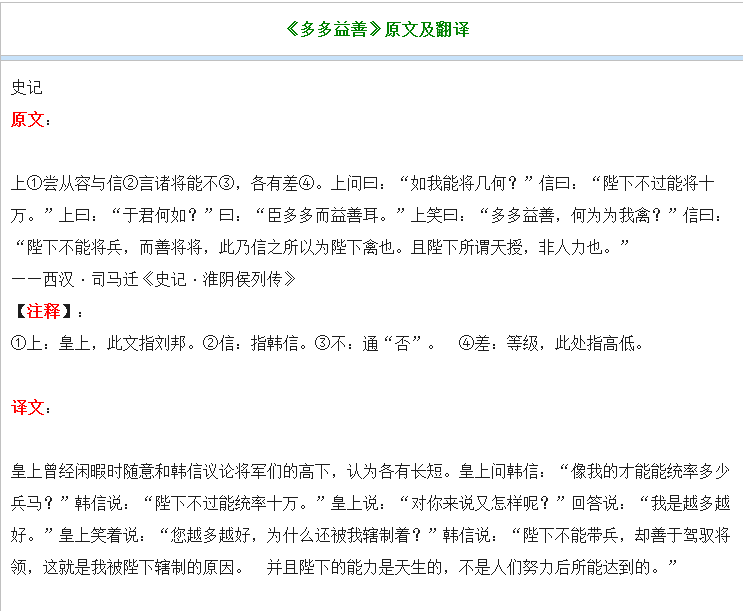
If we turn to history for guidance, I realize that nearly 2000 years ago, during the early years of the Han dynasty in China. The emperor at that time discussed with his best general about the leadership and talent in commanding an army among the rest of his generals. The emperor asked his best general how many troops he could command. The reply was about 100 thousands. Then, the emperor asked how many troops the best general can command. Instead of 100 thousands, the reply was infinite. The emperor laughed, and couldn’t help but wonder if the best general can command so much more troops, why he wasn’t the emperor. The best general answered that while the emperor couldn’t lead solders, he could lead leaders. That was why the best general was working for him. Furthermore, he believed such ability was by nature, not nurture.
My closing remark is that managing people is a skill, an art, not knowledge. We all need plenty of practice to master such a skill.
